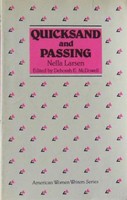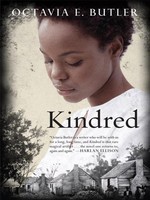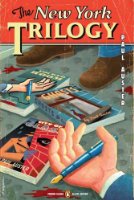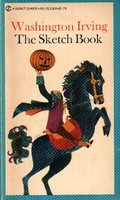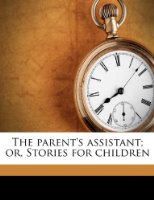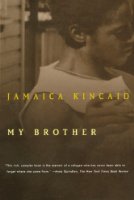
Title: The Hidden Hand, or, Capitola the Madcap
Author: E.D.E.N. Southworth
Year of Publication: 1859
LC Call Number: PS 2892 H5
This is a popular nineteenth century American novel with a tomboyish female hero and very obvious touches of the gothic. In general, I know the British nineteenth century significantly better than the American, so it’s not surprising that The Hidden Hand reminded me of British works rather than American ones. It has very specific elements in common with Ann Radcliffe novels like A Sicilian Romance and The Mysteries of Udolpho: the mysterious figure sometimes sighted at the top of the house, and the trap door in the bedroom, as well as the virtuous heroine with a mysterious background–more about her later. The woman hidden upstairs is also reminiscent of Jane Eyre (she’s accused of being insane, too), but the problems are all worked out in a very, very different way.
In order to explain what kind of book this is, I think I have to give a little explanation of the plot, but it’s complicated enough that it’s difficult to explain in a sentence or two. Capitola is a young woman who is born under mysterious circumstances and transported to New York, where she lives until Major Warfield, better known as Old Hurricane, finds her and brings her back to Virginia as his ward. Cap has all kinds of adventures over the course of the book, but a good deal of the book is focused on the gradual discovery of her background. In the meantime, there is a subplot about Traverse Rocke, a virtuous young man who trains to be a doctor and aspires to marry his mentor’s daughter, but encounters numerous roadblocks along the way, most of them set there with malice. This is a book written for a popular audience, so it’s pretty action-packed and engaging, although Capitola is far more interesting than Traverse. Occasionally, there are several chapters in a row with Traverse and I began rolling my eyes at the later ones.
Really, the major attraction of the book is Capitola. She is nothing like the heroines of the gothic novels I mentioned above. The Radcliffe novels feature rather insipid, helpless women who are shuttled from one crisis to another and whose main personal characteristics are beauty, sensitivity and devotion to their lovers. Jane Eyre, of course, deliberately avoids this type of heroine by making Jane intelligent, self-possessed, and plain, but Jane is also quite severe and very restricted in what she can do. She is well aware of her social limitations and it never seems like she has much fun. In comparison with these ladies, Capitola is an absolute pleasure. She enjoys a degree of freedom and independence of which those ladies never dreamed. When Old Hurricane finds her in New York, she is working in disguise as a newsboy to support herself, and apparently enjoying it. When he brings her to Virginia to live with him, Capitola does not feel an overwhelming (and potentially restrictive) sense of gratitude; she is pleased to go with him, but feels no dread about the possibility of returning to her prior life. Over the course of the book, she goes up against the male villains and wins. She outsmarts bandits (and if having desperate bandits lurking in the woods of Virginia sounds a little strange, well, it’s probably not much less realistic than the depictions of bandits in other gothic work) and challenges an overly persistent suitor to a duel, which she manages to resolve with a minimum of violence. If only Jane Eyre had been able to challenge St. John Rivers to a duel when he argued with her ceaselessly over her decision not to marry him! Capitola takes it for granted that she gets to decide whom she will marry, and feels no compunction about drawing boundaries that define what behavior toward her is appropriate and what isn’t. Although her affection for her caretaker, Old Hurricane, is clear, she doesn’t allow him to bully her either. At one point, he attempts to scold her for leaving the house without his permission. He isn’t very successful in this goal, but it sets up another scene during which Capitola turns the tables and scolds him, using language exactly analogous to the language he used for her. At another point, he threatens to turn her back into the streets; she doesn’t appear to regard this as a dreadful fate and calls him out on his expectations of obedience in return for his so-called gifts.
So Capitola overcomes or ignores restrictions and chooses how to live her life. This could make her an appealing character or an obnoxious monument to privilege; she comes down on the side of appealing character, partly because of her charm and humor. She is fearless. There is a scene, once again reminiscent of Jane Eyre, in which she is accosted by a rather aggressive fortune teller who wants to make all kinds of unpleasant predictions about her future, but she laughs the fortune teller off and eventually begins reciting lines from “Jack the Giant Killer” at her. In the above-referenced scene with Old Hurricane, she makes light of his rage at not being able to control her in part with humorous language. He had asked how she had “the brass” to face him. She imitates this, but adds some flourishes, asking how he has “the brass! the bronze! the COPPER! to speak to me?” (127) She points up what’s ridiculous about his rage in this and other, more subversive ways. Violence is absurd to her, so when she appears to threaten violence, she always finds another way to resolve things. She does this rhetorically when she appears to threaten Old Hurricane in retaliation for his threat to beat her:
“Why then,” said Capitola, speaking in a low, deep, and measured tone, and keeping her gaze fixed upon his astonished face, “the — first — time — I — should — find — you — asleep — I — would — take — a — razor — and–”
“Cut my throat! I feel you would you terrible termagant!” shuddered Old Hurricane.
“Shave your beard off smick, smack, smoove!” said Cap, bounding off and laughing merrily as she ran out of the room. (188)
There’s a similar build-up toward potential but narrowly-avoided violence in the duel. Cap wins the encounter, of course, but she does it without causing lasting harm and in a humorous way. Late in the book, she goes so far as to rescue a condemned man from prison in order to save him from being hanged. She eschews violence, but she is also unimpressed by threats of any kind. Even in her final showdown with the bandit Black Donald, in which she is described as pale and agitated, she is not afraid for her own welfare, but rather is concerned that she may be forced hurt or kill him. Perhaps even more impressively, she is not punished for any of this. Instead, she emerges triumphant from every encounter.
This is not to say that either Capitola or the text is totally free of ideas about conventional nineteenth-century femininity. The suitor I’ve mentioned above is Craven Le Noir, who kidnaps Traverse’s love interest, Clara Day, and attempts to force her to marry him. Clara is a much more conventional female character. She does not allow herself to fall in love with Traverse until her father gives his approval, whereupon her father suddenly dies and she’s left in the power of the Le Noirs. She is beautiful and virtuous but she doesn’t know how to extricate herself from this situation and needs help from Capitola. So yes, there does exist a character filling that role in the book. When Clara refuses to marry Craven, she tells him that it is because she is engaged to Traverse, rather than because Craven is horrible. Later, when he proposes to Capitola, she gives a similar reason — “There’s someone would feel queerish!”– rather than citing his cruelty to her friend, or perhaps the fact that she is not attracted to him. Surely a lack of attachment doesn’t create an obligation to marry the first person who shows up? When Capitola duels him later, this is not her original plan; Southworth avoids making Capitola appear too unfeminine by having her first ask two other male characters to do it for her. It’s fairly clear that this is here to placate the reader, given that the two characters she asked appear to have been added to the text for that purpose alone and do not show up either before or after this incident. Sexual purity is also seen as valuable. Capitola originally assumes male dress partly to avoid rape, and the adult male characters, when forming opinions about her, agree amongst themselves that she must have come away safely. The thing that goads her into challenging Craven is the rumor he spreads about her sexual activities; she wants to defend her honor against his insinuations. On the other hand, the insistence on sexual purity is obliquely criticized in the character of Marah Rocke; she is faithful to her husband, but because he believes that she has not been, she is condemned to live a life of solitude and poverty.
But one thing I really enjoy about the book is that the contrast between Clara and Capitola doesn’t make Clara seem worthless or Capitola ridiculous. In fact, when they meet, they are immediately friends. Capitola’s brilliance and dauntlessness are necessary to free Clara from her peril, but Clara is also brave. The solution to the problem is a disguise trick; the two characters switch places. There are several things I love about the way this is executed. Each of the women pulls off an imitation of the other that is sufficient to fool the people who are responsible for their surveillance, suggesting that perhaps there isn’t such a huge difference between them after all. In fact, there’s a very slight feeling of performativity about it; Clara can enact the essence of Capitola-ness and vice versa. At the same time, each of them imitates the other in a way that is slightly exaggerated and doesn’t quite fool the reader, which emphasizes that they are both more than caricatures. Both performances are available to each of them, but each feels more comfortable with one or the other. Southworth, of course, could not have been familiar with this way of thinking about gender and identity, but when we put this together with Capitola’s remarkable awareness of her own ability to comply or not comply with the expectations of femininity, and her ability to assume femininity (and occasionally masculinity) as a disguise or a jest elsewhere in the book, I have to think there is some commentary on the workings of gender going on here.
In fact, Southworth often explicitly addresses gender issues. Early in the book, Capitola explains that she disguised herself as a newsboy after her “Granny” died because nobody wanted to employ a girl. That is, chivalrous ideas about women and what kinds of activities are appropriate for them actually brought her close to starving. Interestingly enough, Nancy Grewell, the woman Capitola knew as “Granny,” worked as a washerwoman, but Capitola is not able to convince Nancy’s former customers that she, Capitola, is also capable of doing their laundry. This is one part of the book I feel I could understand better if I knew more about the specific expectations of the time. Nancy Grewell is a free mulatto woman, while Capitola is white–does this make a difference when looking for work as a washerwoman? Since this part of the story takes place in New York, and Southworth is a southern writer, it’s also possible that she is mistaken about how some of this works. In any case, the point that prohibiting women from working for money is harmful to them is an important one and definitely one I didn’t expect to see addressed in a text like this. Rape apology is also addressed. I’ve referred several time to the conversation between Capitola and Old Hurricane in which she turns his scolding back around on him. One of the things that happens in this conversation is that she is more explicit about the vague fears which motivate his prohibition against her traveling alone. She pretends to be concerned that he could have been jumped by a gang of strong women and raped. She specifies “Negresses” which the introduction points out is a commentary on the stereotype of the oversexed black woman AND the corresponding male stereotype, but it still seems racist to me. However, I do like how the conversation shows very clearly that one of the uses of rape apology is to convince women that their movements must be restricted, and Capitola isn’t having it. It’s also useful that she shows how ridiculous the entire conversation sounds when it is addressed to someone who is admonished as “OLD GENTLEMAN!” rather than “YOUNG WOMAN!” The plight of women like Clara Day and Marah Rocke is also an implicit criticism of the amount of power that men have over women in the society portrayed here.
Southworth is American, so race comes into it. Overall, the book does not deal with race as well as I’d like. One difference between the nineteenth century British novel and the nineteenth century American novel is that you have all these slaves around. Old Hurricane, in fact, is a slaveholder, and we see some of the slaves consistently throughout the book, but they certainly are not well-developed characters. I kept wondering whether we would see Capitola inherit the estate, and whether she would free the slaves when this happened, but property did not change hands by the end of the book. I like to think that this sounds like something Capitola would do, but disappointingly, we didn’t get to see it happen, or any conversation about it. It rankles to see how Capitola values her freedom, and how gaining freedom is explicitly framed as something that Clara needs to do, while nobody says anything about the people who are literally enslaved who are RIGHT THERE.
There is one exception to this. Nancy Grewell is the midwife who was present at Capitola’s birth, and as I mentioned earlier, she is a free mulatto woman. Capitola’s mother is the prisoner of the bandits at the time, and it is in the bandits’ interest to kill the child. Luckily, she has a twin brother who is stillborn, so Nancy shows the bandits the dead baby and makes off with the living one. She is later captured and threatened with being sold, but manages to escape due to a shipwreck. This is how she becomes Capitola’s Granny. Perhaps this is just a contrivance of the plot, but when I read it, it seemed more than anything like a reminder that the life of a free black person bears this constant threat, that freedom is a state that must be defended. This seems like an anti-racist statement to me, and I love love love Nancy Grewell as a character, even if Southworth backpedals a little later in the book to give Capitola’s mother credit for the idea of stealing the baby and have the bandits have noticed the baby and turned a blind eye to it. I like it better when she’s so clever and competent she can do all this herself, but she is still pretty badass.
One more thing that is interesting: the plot structure. A lot of Gothic novels are about the mystery which is shockingly revealed. In The Hidden Hand, there really aren’t such reveals. The book sets up a little mystery, but quickly lets the reader in on the secret, leaving the intrigue and the pleasure of seeing the characters react. We know what Capitola’s history and parentage is, who Marah Rocke’s husband is, what the bandits’ plan is, and so on, very early in the course of the novel. It’s for the characters to slowly unravel this. I found this really interesting but am not entirely sure what the effect is. Part of it, I guess, is that we better understand the danger of certain situations that the characters (Capitola in particular) may not fully appreciate, but more than that, it draws our focus away from the strange and mysterious plots that are going on and lets us pay attention instead to, well, to Capitola.

